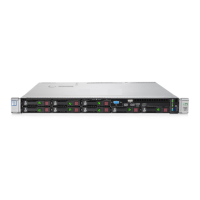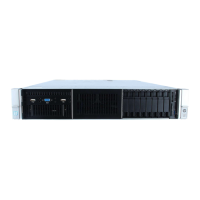• Minimum Password Length—Specifies the minimum number of characters allowed when a
user password is set or changed. The character length must be a value from 0 to 39 characters
long. The default value is 8.
• Server Name—Enables you to specify the host server name. You can assign this value manually,
but it might be overwritten by the host software when the operating system loads.
◦ You can enter a server name that is up to 49 bytes.
◦ To force the browser to refresh and display the new value, save this setting, and then
press F5.
• Server FQDN/IP Address—Enables you to specify the server FQDN or IP address. You can
assign this value manually, but it might be overwritten by the host software when the operating
system loads.
◦ You can enter an FQDN or IP address that is up to 255 bytes.
◦ To force the browser to refresh and display the new value, save this setting, and then
press F5.
• Authentication Failure Logging—Enables you to configure logging criteria for failed
authentications. All login types are supported; each login type works independently. The
following are valid settings:
◦ Enabled-Every Failure—A failed login log entry is recorded after every failed login attempt.
◦ Enabled-Every 2nd Failure—A failed login log entry is recorded after every second failed
login attempt.
◦ Enabled-Every 3rd Failure (default)—A failed login log entry is recorded after every third
failed login attempt.
◦ Enabled-Every 5th Failure—A failed login log entry is recorded after every fifth failed
login attempt.
◦ Disabled—No failed login log entry is recorded.
Access Settings–Service
• Secure Shell (SSH) Access—Allows you to enable or disable the SSH feature.
SSH provides encrypted access to the iLO CLP. The default value is Enabled.
• Secure Shell (SSH) Port—The default value is 22.
• Remote Console Port—The default value is 17990.
• Web Server Non-SSL Port (HTTP)—The default value is 80.
• Web Server SSL Port (HTTPS)—The default value is 443.
• Virtual Media Port—The default value is 17988.
• SNMP Access—Specifies whether iLO should respond to external SNMP requests. The default
value is Enabled.
If you set SNMP Access to Disabled, iLO continues to operate, and the information displayed
in the iLO web interface is updated, but no alerts are generated and SNMP access is not
permitted. When SNMP Access is set to Disabled, most of the boxes on the
Administration→Management→SNMP Settings page are unavailable and will not accept
input.
Using iLO Configuration Utility 53

